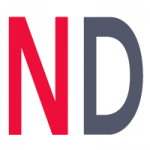The National Health Insurance Scheme (NHIS) has been operational since October of 2019. The NHIS was established by the National Health Insurance Act No 2 of 2018. The main objectives of the Act are to provide for sound financing of the national health system and support universal access to quality insured health care services, as well as establish the National Health Insurance Fund and the National Health Insurance Management Authority (NHIMA) responsible for managing the contributions to and payments from the fund.
This article explores the progress made in the roll out of the NHIS since its inception and whether the objects of the enabling Act have or are being met.
All Zambian citizens between the ages of 18 and 65 are required to remit a mandatory contribution of one percent of their gross salary to the NHIS Fund. Employers (in both formal and informal sector) are required to submit an additional one percent on behalf of every employee. Health insurance is separate from general tax that the Government collects and is earmarked specifically for health care service delivery. The NHIS entitles contributing members to a predetermined set of healthcare benefits.
According to the Ministry of Health, members/beneficiaries of the NHIS will not be required to pay money or mandatory fees when in need of health care services. The insurance will cover beneficiaries through the continuum of care without financial barriers.
The NHIS covers both public and private health facilities, therefore providing beneficiaries with a choice of where to go to access health services. NHIMA has an accreditation process through which various providers of the insured health services are accredited in respect of insured health care services at national, provincial and district levels.
As at January 2021, NHIMA had accredited 130 health care providers nation-wide, the vast majority of these being State followed by facilities operated by Faith Based Organisations. From the data that has been made available by NHIMA, there are currently no private hospitals among the accredited institutions. In other words, so far it is only public hospitals participating in the NHIS and beneficiaries are not yet able to access health care from private hospitals. There are however select pharmacies and diagnostic centers that have been accredited. At the end of 2020, eight private diagnostic centers and pharmacies had been accredited.
What this brings to light is that beneficiaries or members of the public that remit the mandatory contributions towards the NHIS are still susceptible to hospital fees and costs, as long as they seek services from private health care providers where an average consultation ranges between ZMK 200 and K650 depending on the specific facility. This is of particular concern given the prevalence of COVID -19. Health systems are over-burdened, and citizens have to contend without-of-pocket costs, despite making contributions to the NHIS. This also flies in the face of the principle of universal quality health care. Inequalities persist as quality health care has thus far remained a preserve of the elite who are able to afford private health care services and therefore access to better infrastructure, technology, diagnostic services and medicine. In addition NHIS beneficiaries are limited in their choices of health care providers.
Another concern is the sensitivity of the NHIS to the specific needs of special groups such as children and people living with disabilities. A study conducted by the Centre for Trade and Policy Development in 2020 on the sensitivity of the NHIS to child health needs revealed the need for a comprehensive policy to guide the rollout of the Benefits Package provided by NHMA in the context of pediatrics services. The Benefits Package is a list of services and products that are available to the public under the NHIS. The comprehensive policy should address the aspect of access to services and treatment of children at various institutions to avoid children competing with adults for services, as well as establishing guidelines on the procurement of equipment and infrastructure for child health needs.
Because of the advent of COVID-19, financing of health care has become a critical issue and a key element to consider when mapping out domestic resource mobilization strategies. The NHIS does not function in isolation, but rather exists to compliment and strengthen the existing health care system. That being said, it is imperative that the NHIS is implemented in such a way that the various players within the health care system participate, in other words, both public and private entities. Through the monies collected from the public, the NHIS has the potential to alleviate some of the burden on the State in the context of expenditure on health, especially in a COVID-19 era.
In the next article, we explore the challenge and bottlenecks hindering effective rollout of the NHIS, including for example the accreditation and participation of private hospitals.
About the Author
Chileshe G. Mange is a Researcher at CTPD, an Advocate of the High Court for Zambia and a part-time tutor with the University of Zambia.

























One Response
Health Insurance is supposed to be mandatory for all members of the public. Children, adults and foreigners must prove membership in a health insurance scheme. Health Insurance pays for the expenses that government can not cover in the national budget. It is a win-win scenario. The penalty for not belonging to sound Health Insurance scheme is that the patient would pay out of pocket at point of medical treatment. However, the types of medical insurance vary according to needs. In the case of employees, the formula needs to be institution based. In the case of self employed, then the formula must be negotiated as members of a religious body, cooperative, union society or association. In any case, government must provide guidelines in order to prevent fraud and corruption. For instance, university students could be covered by student union partnerships. Similarly, employers could be covered by health insurance for particular groups of employers. Each scheme lists partner health care providers. Therefore, it is wrong to visit the wrong health care providers.